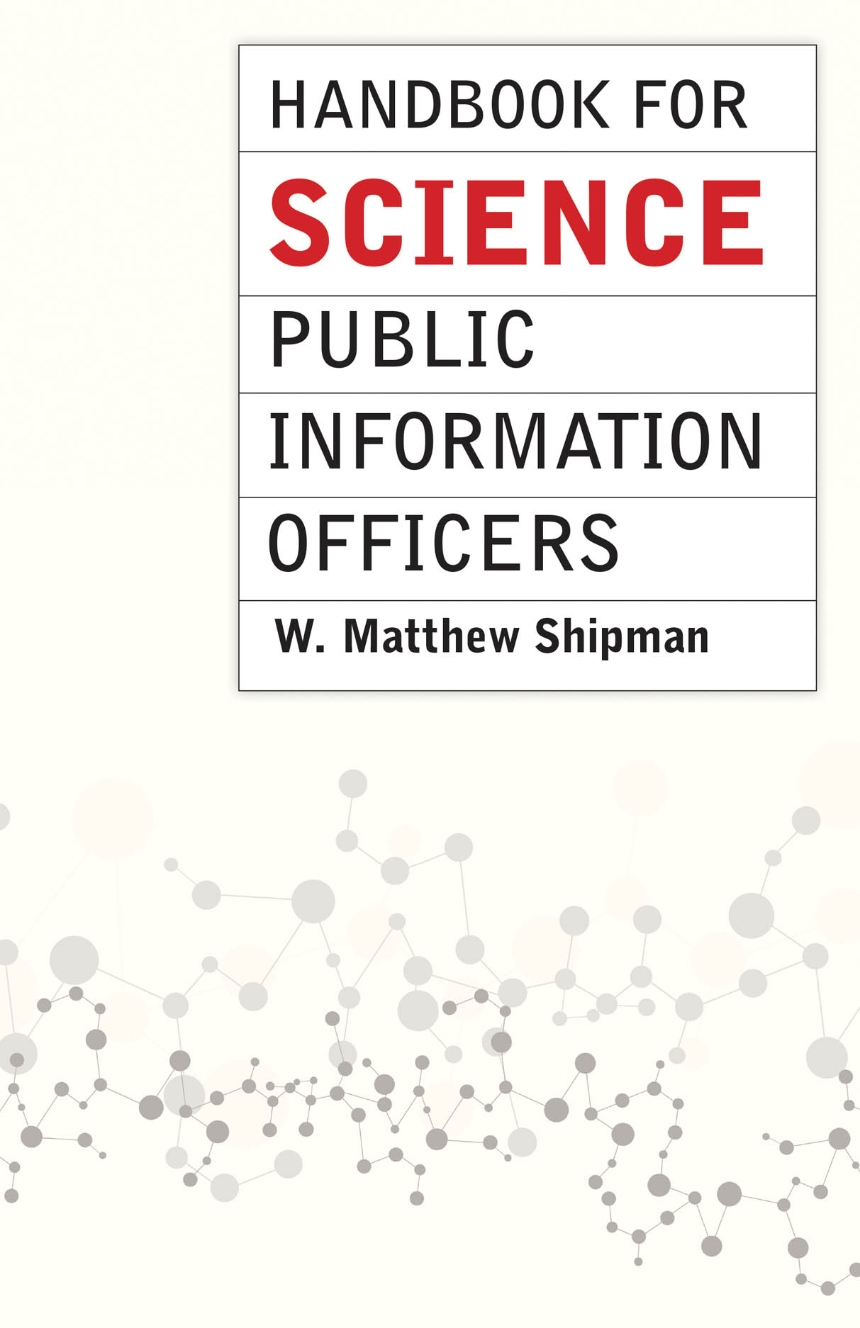Handbook for Science Public Information Officers
Whether sharing a spectacular shot from a deep-space probe, announcing a development in genetic engineering, or crafting an easy-to-reference list of cancer risk factors, science public information officers, or PIOs, serve as scientific liaisons, connecting academic, nonprofit, government, and other research organizations with the public. And as traditional media outlets cut back on their science coverage, PIOs are becoming a vital source for science news.
W. Matthew Shipman’s Handbook for Science Public Information Officers covers all aspects of communication strategy and tactics for members of this growing specialty. It includes how to pitch a story, how to train researchers to navigate interviews, how to use social media effectively, and how to respond to a crisis. The handbook offers a wealth of practical advice while teaching science PIOs how to think critically about what they do and how they do it, so that they will be prepared to take advantage of any situation, rather than being overwhelmed by it.
For all science communicators—whether they’re starting their careers, crossing over from journalism or the research community, or professional communicators looking to hone their PIO skills—Shipman’s Handbook for Science Public Information Officers will become their go-to reference.
W. Matthew Shipman’s Handbook for Science Public Information Officers covers all aspects of communication strategy and tactics for members of this growing specialty. It includes how to pitch a story, how to train researchers to navigate interviews, how to use social media effectively, and how to respond to a crisis. The handbook offers a wealth of practical advice while teaching science PIOs how to think critically about what they do and how they do it, so that they will be prepared to take advantage of any situation, rather than being overwhelmed by it.
For all science communicators—whether they’re starting their careers, crossing over from journalism or the research community, or professional communicators looking to hone their PIO skills—Shipman’s Handbook for Science Public Information Officers will become their go-to reference.
176 pages | 1 table | 5 1/2 x 8 1/2 | © 2015
Chicago Guides to Writing, Editing, and Publishing
Biological Sciences: Ecology
Earth Sciences: General Earth Sciences
Reviews
Table of Contents
Introduction:
Why Science PIOs Matter (and Communication 101)
1 Finding Stories and Deciding What to Write About
2 Writing Stories
3 Pitching Stories
4 Illustrating Stories with Multimedia
5 Getting Scientists to Tell Their Stories
6 Telling the Story Yourself: Social Media and Blogs
7 Measuring Your Story’s Success: Metrics
8 Stories You Don’t Want: Crisis Communications
Conclusion: The Science PIO Commandments
Acknowledgments
Appendix A: Useful Links for Multimedia
Appendix B: Sample Research News Release
Appendix C: Sample Grant Announcement
Appendix D: Sample Media Advisory
Appendix E: Sample News Tip
Appendix F: Sample Communication Plan
Index
Why Science PIOs Matter (and Communication 101)
1 Finding Stories and Deciding What to Write About
2 Writing Stories
3 Pitching Stories
4 Illustrating Stories with Multimedia
5 Getting Scientists to Tell Their Stories
6 Telling the Story Yourself: Social Media and Blogs
7 Measuring Your Story’s Success: Metrics
8 Stories You Don’t Want: Crisis Communications
Conclusion: The Science PIO Commandments
Acknowledgments
Appendix A: Useful Links for Multimedia
Appendix B: Sample Research News Release
Appendix C: Sample Grant Announcement
Appendix D: Sample Media Advisory
Appendix E: Sample News Tip
Appendix F: Sample Communication Plan
Index
